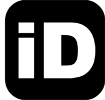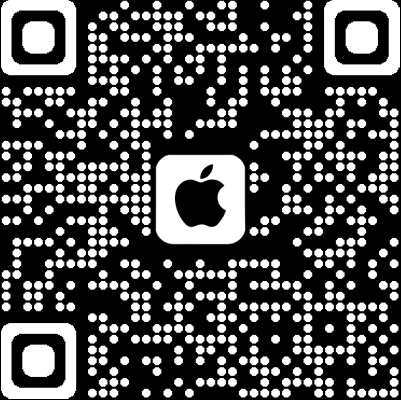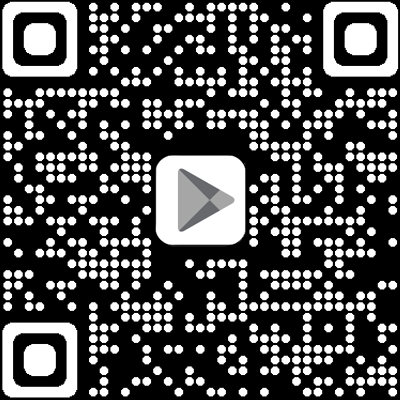
Too many people have their passport applications denied due to passport photos that don’t follow the guidelines set out by the government. If you’re living in the United States and getting ready to submit your passport application, read this guide on taking acceptable passport photos.
Last update:3/27/2025
Examples & Expert Tips – U.S. Passport Photo Guide
A passport photo that does not meet official requirements can cause delays or rejection of your application. Below is a detailed guide, complete with expert tips, to help you capture a perfect, compliant U.S. passport photo.
1. Passport Photo Size & Dimensions
Required specifications
- Photo size: 2 x 2 inches (51 x 51 mm)
- Head height (from chin to crown): Between 1 inch and 1 3/8 inches (25 mm – 35 mm)
- Aspect ratio: Must be square
- Resolution: At least 300 DPI for high print quality
Common mistakes
- Head appears too large or too small in the frame.
- Incorrect cropping, cutting off the top of the head or chin.
- Incorrect aspect ratio, making the photo too rectangular instead of square.
Examples
✔ Compliant: Head centered, correct size, and enough space around the face.
✖ Non-compliant: Head touching the top border, head too small, image stretched or distorted.
Expert tips
- Stand at least 2–4 feet away from the camera for correct proportions.
- Avoid zooming in after taking the photo—instead, move closer or farther for proper framing.
- Ensure even spacing between your head and the photo’s edges to allow proper cropping.
2. Facial Expression & Eye Contact
Required:
- Maintain a neutral expression or a slight, natural smile (no teeth showing).
- Both eyes must be open and clearly visible.
- Mouth must be closed, no exaggerated expressions.
Common mistakes:
- Smiling too broadly, revealing teeth.
- Eyes partially closed or squinting.
- Raised eyebrows or any unnatural facial expressions.
Examples:
✔ Compliant: Relaxed, neutral face, looking directly at the camera.
✖ Non-compliant: Wide grin, raised eyebrows, or blinking.
Expert tips:
- Think of airport security photos—keep your face calm and composed.
- Blink before the photo to ensure open, natural-looking eyes.
- If photographing a baby or young child, use a toy or light behind the camera to grab their attention.
3. Hair Position & Visibility of Face
Required:
- Hair should be neatly arranged and must not cover any part of the face.
- No shadows from hair should appear on the face.
- Hair must fit within the photo frame without going beyond the edges.
Common mistakes:
- Hair covering eyes, eyebrows, or part of the forehead.
- Stray hairs casting shadows on the face.
- Bulky or decorative accessories that block facial features.
Examples:
✔ Compliant: Hair pulled back, tucked behind ears, with no shadows on the face.
✖ Non-compliant: Hair covering an eye, excessive use of hair clips, or flyaways creating a shadow.
Expert tips:
- Use a small, neutral-colored hairpin to keep hair in place.
- Avoid elaborate hairstyles extending beyond the frame.
- Use a light mist of water or gel to smooth out flyaways.
4. Facial Hair
Allowed:
- Beards, mustaches, and goatees are acceptable.
- Facial hair must not obscure any facial features.
- No shadows caused by thick facial hair.
Common mistakes:
- Thick beards covering the chin contour.
- Shadows on the lips, jawline, or neck.
Examples:
✔ Compliant: Well-groomed facial hair with clear visibility of all features.
✖ Non-compliant: Overgrown mustache covering lips, or a beard casting a shadow.
Expert tips:
- Trim beards or mustaches to maintain clear visibility of the mouth and jawline.
- Ensure bright, even lighting to reduce shadows from facial hair.
- If you plan to shave soon, consider doing it before taking the photo for consistency.
5. Clothing & Dress Code
Allowed:
- Everyday casual clothing (no logos or distracting designs).
- Religious or medical head coverings (must not obscure facial features).
- Solid-colored tops that contrast with the background.
Not allowed:
- Uniforms, camouflage, or military attire.
- White or very light-colored tops, which blend into the background.
- Clothing that casts shadows or covers part of the face.
Examples:
✔ Compliant: A plain-colored shirt in blue, gray, or green.
✖ Non-compliant: White T-shirt blending into the background or attire covering the face.
Expert tips:
- Wear a medium-tone color to stand out against the white background.
- Avoid logos, patterns, or large prints that can distract from your face.
- Religious head coverings should frame the face without covering the eyebrows, eyes, nose, or mouth.
6. Glasses & Accessories
Allowed:
- Glasses only for medical reasons, with a signed doctor’s statement.
- Minimal and non-distracting jewelry (small earrings, studs).
Not allowed:
- Regular glasses, sunglasses, or tinted lenses.
- Large hoop earrings or facial piercings covering any facial features.
- Decorative headwear not for religious or medical purposes.
Examples:
✔ Compliant: No glasses, or prescription glasses with no glare (if allowed).
✖ Non-compliant: Large earrings, glasses reflecting light, or oversized accessories.
Expert tips:
- If glasses are required, tilt your head slightly to reduce glare.
- Keep jewelry minimal and remove piercings that obscure your features.
7. Posture & Head Position
Required:
- Face directly forward, no tilting.
- Eyes looking straight ahead.
- Head centered in the frame.
Common mistakes:
- Tilting the head or turning slightly to the side.
- Uneven shoulders or angled posture.
- Looking away from the camera.
Expert tips:
- Sit on a stool or stand against a plain background for proper posture.
- Align your nose with the center of the camera frame.
- Relax your shoulders and keep your jaw neutral to avoid stiffness.
8. Background & Lighting
Required:
- Plain white or off-white background.
- No shadows, patterns, or objects.
- Even lighting on the entire face.
Common mistakes:
- Colored or textured backgrounds.
- Shadows behind the head or across the face.
- Uneven brightness causing highlights or dark areas.
Expert tips:
- Stand at least 3 feet (1 meter) from the wall to avoid background shadows.
- Use two light sources, one on each side, for even lighting.
- If using natural light, face a window but avoid direct sunlight.
9. Shadows & Exposure
Required:
- The face must be evenly lit, without dark areas or overexposed spots.
- Shadows on the face, neck, or background are not allowed.
- The photo must accurately represent natural skin tones without distortions.
Common mistakes:
- Dark or underexposed photos make facial features unclear.
- Overexposed photos where parts of the face appear too bright or washed out.
- Shadows from hair, glasses, or accessories appearing on the skin.
- One side of the face being darker than the other due to uneven lighting.
Examples:
✔ Compliant: Even skin tone, clear visibility of all facial features, no harsh lighting.
✖ Non-compliant: Bright spots washing out facial features, one side too dark.
Expert tips:
- Avoid direct overhead lighting, as it casts shadows under the chin and nose.
- Use multiple light sources (one on each side) to balance brightness.
- Take a test photo and check for dark areas or glare before finalizing the image.
- If using natural light, stand near a window with indirect sunlight for best results.
10. Baby & Child Passport Photos
Required:
- The baby’s eyes must be open and looking straight at the camera.
- Mouth closed, if possible (some leniency is given for infants).
- No visible hands, toys, blankets, or support objects in the frame.
- The background must be plain white without shadows.
Common Mistakes:
- Parent’s hands visible holding the baby’s head.
- Baby lying on a colored blanket instead of a plain white sheet.
- Baby crying, head turned, or mouth open in an exaggerated expression.
Examples:
✔ Compliant: Baby lying on a white sheet, eyes open, head straight.
✖ Non-compliant: Baby crying, hands visible, or background not white.
Expert tips:
- Lay the baby on a flat, white sheet and take the photo from above.
- Use toys or sounds behind the camera to grab their attention.
- Take multiple shots to increase the chance of capturing a compliant image.
- For newborns, gently support their head with a rolled white towel, keeping it out of sight.
11. Digital Editing & Enhancements
Allowed:
- Cropping to fit the correct dimensions.
- Adjusting brightness, contrast, or sharpness to improve visibility.
- Background removal if done professionally without altering facial features.
Not allowed:
- Applying filters or beauty enhancements that alter skin tone or texture.
- Removing natural marks such as scars, moles, or birthmarks.
- Digitally changing hair color, eye color, or facial structure.
Common mistakes:
- Over-editing removes skin texture, making the face look unnatural.
- Changing the background incorrectly, creating noticeable edges around the subject.
- Using automatic smartphone enhancements that smooth the skin excessively.
Examples:
✔ Compliant: Naturally lit photo with correct brightness and contrast.
✖ Non-compliant: Filtered image with blurred skin and altered features.
Expert tips:
- Avoid beauty filters or AI-enhanced photos that make the skin look airbrushed.
- Use an official passport photo tool that ensures compliance without over-editing.
- Ensure the background removal process looks natural and blends smoothly.
12. Passport Photos for People with Disabilities
Allowed exceptions:
- If an applicant cannot keep their eyes open due to a medical condition, the photo can be accepted with closed eyes.
- If the applicant has involuntary muscle movements, a non-neutral expression may be accepted.
- Individuals unable to support themselves in a sitting position can use invisible support, such as a headrest covered with a white cloth.
Common mistakes:
- Visible medical equipment or support devices in the photo.
- A caregiver’s hand holding the applicant’s head.
- Failing to provide medical documentation when exceptions apply.
Examples:
✔ Compliant: A person with a medical condition preventing eye opening, no visible support, plain background.
✖ Non-compliant: Caregiver’s hand holding the head, visible headrest in a wheelchair.
Expert tips:
- If physical support is required, use a plain white pillow or cloth behind the head.
- Submit a signed medical statement from a healthcare provider explaining why standard rules cannot be followed.
- Contact the passport office in advance for guidance on special accommodations.
13. Passport Photos for People Using Mobility Devices
Required:
- The photo must clearly show the applicant’s face, following standard passport guidelines.
- If taken in a wheelchair, the background must be plain white or off-white.
- Any headrests or supports must be covered with a plain white cloth or edited out professionally.
Common mistakes:
- Visible wheelchair components such as handles, armrests, or headrests.
- Background clutter or shadows from assistive devices.
- Improper cropping, where mobility equipment is included in the frame.
Examples:
✔ Compliant: A wheelchair user positioned against a plain white background, with nothing obstructing the face.
✖ Non-compliant: A visible wheelchair headrest in black, or armrests appearing in the frame.
Expert tips:
- Take the photo against a white wall, and cover any visible wheelchair parts with a white sheet if necessary.
- If professional editing is required, ensure the adjustments do not violate passport rules.
- If posture support is needed, submit documentation to the passport office, explaining why accommodations are necessary.
14. Passport Photos with Religious Headwear
Allowed
- Religious head coverings are permitted, as long as they do not obscure any facial features.
- The entire face must be visible, from the bottom of the chin to the top of the forehead, and from ear to ear.
- Head coverings should be plain and without patterns, if possible, to avoid distractions.
Common mistakes
- Face partially covered, including the eyebrows, cheeks, or chin.
- Wearing decorative headwear not tied to religious practices (e.g., fashion scarves, large accessories).
- Shadows caused by bulky or loose fabric, reducing visibility of facial features.
Examples
✔ Compliant: A hijab that covers the hair but fully reveals the face and forehead.
✖ Non-compliant: A scarf covering part of the cheeks or eyebrows, or a turban with bulky decorations.
Expert tips
- Choose plain fabrics that contrast gently with the white background (light gray, beige, navy blue).
- Tuck in any loose fabric that may cast a shadow on the face.
- If wearing a turban, yarmulke, hijab, or other traditional headwear, ensure it fits closely to the head and does not extend beyond the photo boundaries.
Common Reasons for Passport Photo Rejection
Every year, thousands of passport applications face delays due to non-compliant photos. According to the U.S. Embassy, more than 200,000 passport photos were rejected last year because of poor quality, making it difficult to clearly identify applicants.
Some of the most common reasons for rejection Based on more than million Analyzed valid Photos by our expert include:
- Wearing eyeglasses – Causes glare on the lenses, shadows on the face, or obstructs part of the eyes.
- Improper lighting – Shadows, reflections, or overexposure can make facial features unclear.
- Incorrect sizing – Photos that are too small, too large, or do not fit biometric requirements.
- Facial expressions – Smiling, frowning, or not having a neutral expression can lead to rejection.
- Poor image quality – Blurry, grainy, or pixelated images fail to meet passport standards.
- Incorrect background – Backgrounds that are not plain white or off-white can cause issues.
- Head positioning – Tilting the head, improper framing, or not facing the camera straight-on.
Tips to Taking an Acceptable Passport Photo
We have put together a few tips to know about taking a photo that will pass the rigorous government inspection:
- Make sure to have good lighting that shows your natural skin tone
- Remove glasses or hats that may cover your face
- Wear dark coloured clothing to contract with the light-coloured background
- Don’t smile but maintain a neutral facial expression
These are only a few of the requirements that must be met to take an acceptable passport photo. We recommend using the smartphone iD app to take your passport photo as we use Ai-verification and a team of experts to ensure the photo meets these requirements and more.
How to make an acceptable passport photo with your phone at an inexpensive price
Smartphone iD enables users to take an acceptable photo from their smartphone and have it ready within minutes. Here is an easy guide to taking a photo using Smartphone iD:
- Use our online passport photo tool for quick and easy passport photo by clicking the “Take a Photo” button.
- Select Passport for the photo option and Canada for the country
- Take the photo using your smartphone
- Have it delivered to your inbox
You can also opt to have the passport photo printed on high-quality paper and delivered to your home address.
Summary
Smartphone iD makes taking passport photos easy and affordable. You no longer need to wait in long lines or pay ridiculous fees to get a passport photo that passes inspections and enables you to start traveling. Get the app today and have your passport photo ready in minutes.
Sources
https://travel.state.gov/content/travel/en/passports/how-apply/photos.html
https://www.cvs.com/photo/passport-photos
Continue Reading
- Top US Examples of Rejected Passport Photos
- Simple Steps to a Good Passport Photo
- The Number One Reason Your Passport Photo Got Rejected
- How to Take a Digital Passport Photo from Home? The ultimate guide
- Need More Time? Read Now to Find Out How to Take a Passport Photo at Home
- Get Better Passport Photo Results With the Best Passport Photo App





